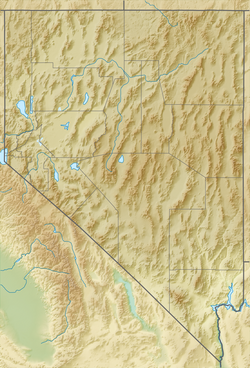| Mount Davidson | |
|---|---|
Storey County, Nevada, U.S. | |
| Highest point | |
| Elevation | 7,868 ft (2,398 m) NAVD 88 [1] |
| Prominence | 2,704 ft (824 m) [2] |
| Listing | Nevada County High Points 17th [2] |
| Coordinates | 39°18′29″N119°39′49″W / 39.308180633°N 119.663485353°W [1] |
| Geography | |
| Location | Storey County, Nevada, U.S. |
| Parent range | Virginia Range |
| Topo map | USGS Mount Davidson |
Mount Davidson is both the highest and most topographically prominent mountain in both Storey County, Nevada, and the Virginia Range. The mountain forms a backdrop for the mining boomtown of Virginia City which was built above the Comstock Lode silver strike.
Mount Davidson was named after Donald Davidson, a geologist. [3]
Mark Twain mentions a flag on Mount Davidson in his semi-autobiographical book Roughing It . [4] As of 2003 the flagpole was still standing. [5]
